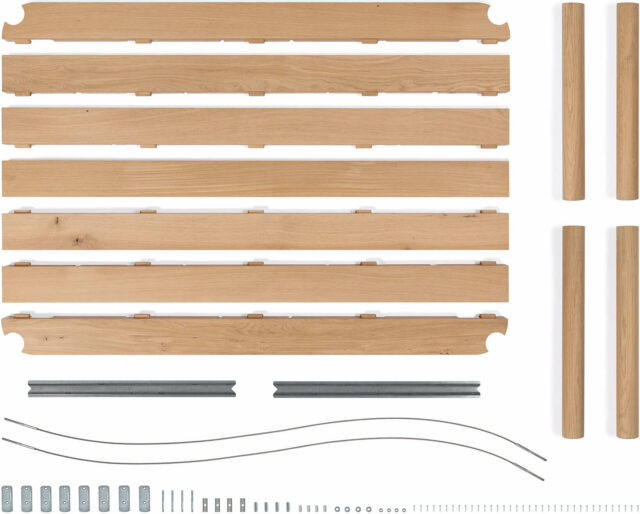100% circular dining table + chair
In line with a circular economy, this table and chair are made entirely from biodegradable or 100% technically recyclable materials. Even the wooden parts are entirely without glue. Why without glue? Glue is a plastic that cannot be recycled or cleanly separated from the wood no matter if processed in relatively small quantities. This collection aims to show that furniture can be uncompromisingly 100% circular.














